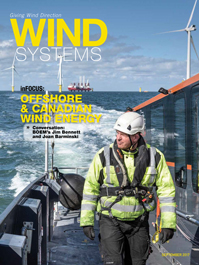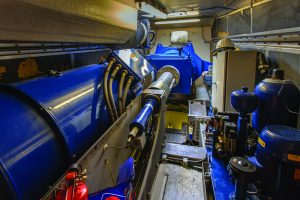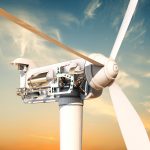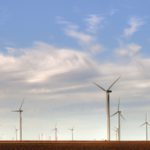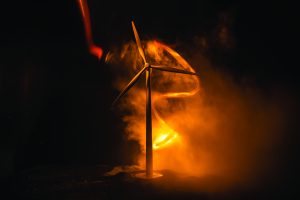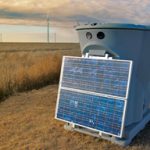Globally, wind energy is one of the fastest growing major sources of new electricity around the world, with installations of more than 55,000 MW of clean, reliable wind power in 2016 alone. More than 80 countries have now installed wind-energy facilities. The U.S. is the second largest market with more than 82,000 MW, capable of supplying up to 25 million homes. Canada is in eighth place with just more than 12,000 MW, meeting about 6 percent of Canada’s electricity needs.
Wind energy has made tremendous progress in Canada, and the future promises continued strong growth. In the past decade, wind has become not just a mainstream energy choice; it is now the mainstream energy choice. Canadians have built more wind-energy capacity over the past 11 years in the country than any other form of electricity generation.
Costs Have Fallen
There are good reasons for this. Costs for wind energy in Canada have fallen dramatically over the past decade, making it one of the country’s two most cost-competitive sources of new electricity supply. It is clearly the least costly form of emissions-free electricity generation available today.

Unlike its main competition, natural gas, wind energy is not affected by the carbon pricing that is being put in place across Canada. Nor is it subject to potential future commodity price fluctuations. It is also widely recognized that the ongoing evolution of technology will lead to further declines in the cost of wind energy. Taken together, this means wind should only become more affordable over time. Plus, system planners know it can be deployed quickly at whatever scale is required to match customer demand growth.
Canadian politicians, electricity sector leaders, and knowledgeable consumers are increasingly aware that no other electricity technology can offer the same combination of affordability, reliability, scalability, and sustainability that wind energy can.
Wind energy’s rapid expansion is driven by wind’s two most important attributes: It is low-cost and emissions-free.
Global Competition
As the Global Wind Energy Council’s 2016 Outlook states, wind power is the most competitive option for new power supply in a growing number of global markets with rapidly dropping prices. Some projects are delivering electricity for as low as 4 cents (U.S.)/kWh. The U.S. financial advisory firm, Lazard, has found the levelized cost of wind energy has fallen 66 percent since 2009. Costs are expected to decrease further by up to 26 percent by 2025, according to the International Renewable Energy Agency.

Wind power is also one of Canada’s best hopes for addressing climate change. Study after study has shown the only way Canada will be able to reduce greenhouse gas emissions in a significant way (80 percent or more by 2050) is by moving away from the use of carbon fuels in transportation, heating and cooling buildings, and in industrial processes, and replacing them with clean electricity. Wind energy’s low costs and lack of emissions have become its competitive advantage.
This means wind energy will play a critical role in helping Canada meet its commitments on climate change. The initial goal is to reduce greenhouse gas emissions by 30 percent as of 2030 compared to 2005 levels.
In the U.S.
While the U.S. has announced its plans to withdraw from the Paris Climate Agreement, many states and cities have made strong commitments to green energy and to reducing greenhouse gas emissions. Some states such as Iowa and South Dakota already get more than 30 percent of their electricity from wind. Other states are turning to green-energy sources, including renewable energy from Canada. For example, the state of New York plans to get 50 percent of its power from renewable energy sources by 2030, and Massachusetts plans to acquire almost 10 TW/h of additional renewable energy. A recent request for proposals in Massachusetts saw both Quebec and Atlantic Canada submit bids for consideration that included significant quantities of new Canadian wind energy.

Canada now generates 83 percent of its power using non-emitting sources, and the federal government has set a target to up that contribution to 90 percent by 2030. As part of Canada’s emission-reduction commitments, it has targeted the complete phase out of coal-fired generation by 2030. Canada’s largest province, Ontario, already has closed several stations and is now coal-free. Other provinces will follow suit and replace much of their coal generation with wind. Two western provinces, Alberta and Saskatchewan — both now reliant on coal — are planning to install close to 7,000 MW of renewable energy capacity, most of it wind energy, as part of its plans to green the grid.
Despite wind energy’s rapid growth, Canada has still only scratched the surface of wind energy’s potential contribution to electricity production. In July 2016, the Canadian Wind Energy Association released the results of a ground-breaking study that found Canada can reliably and cost-effectively get more than a third of its electricity from wind energy. The Pan-Canadian Wind Integration Study found there are no operational barriers to reaching a 35-percent wind contribution to Canada’s electricity supply. New transmission interconnections to facilitate the integration of wind energy and its movement to various markets would essentially be paid for within four years through fuel savings as more expensive coal and gas-fired generation is displaced in both the U.S. and Canada. Air pollution and climate change emissions would decline by millions of tons, while Canada could increase its clean-energy exports by billions of dollars.
Optimistic Future
Achieving such penetration levels requires a smart approach to limiting emissions from natural gas-fired generation, recognizing that natural gas provides a helpful bridge to a greener economy, but it should not act as a barrier to renewable-energy development. Strategic transmission investments need to be made to ensure Canada can move wind energy from wind-rich areas to those in need of clean power. The evolution of electricity market design and the rules that recognize and reward the value wind energy brings to the power grids also needs to continue.

The wind-energy industry faces the future with optimism. It is becoming clearer by the day that the world’s energy supply and its economies are evolving, moving toward a greener future. Britain and France recently announced they will ban the sale of new gasoline and diesel cars by 2040. Volvo is moving toward an all-electric or hybrid fleet by 2019. Tesla has received deposits from 500,000 customers for its new electric car, the Model 3. New supplies of emission-free electricity will be needed to power this clean transportation of the future.
Commercial and industrial companies such as Google are contracting for wind energy to power their operations. In the U.S., one third of all new wind-power purchase contracts are being signed by these customers. In Alberta, IKEA owns two wind farms, part of its commitment to produce more renewable energy than it uses by 2020.
It’s not always apparent that the nations of the world share similar objectives. With the healthy expansion of wind energy around the globe, it’s clear Canada, the U.S., and a growing number of countries are moving together in one way, toward a cleaner future.
















